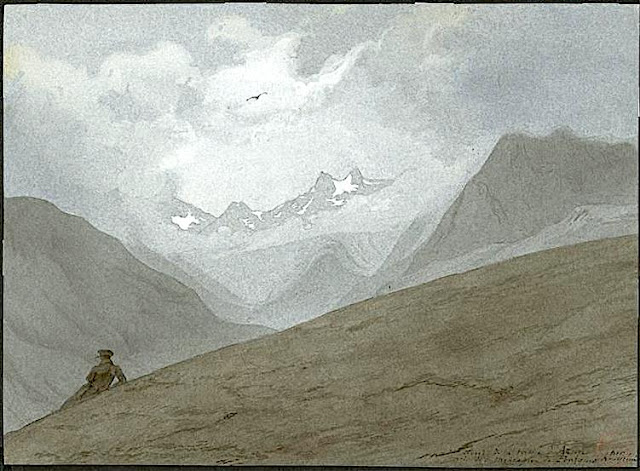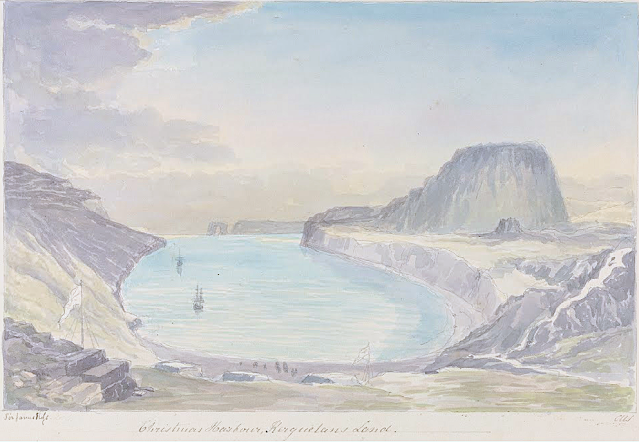Les Petites Dalles (30 à 50m)
France
In " Falaises près de Dieppe," Huile sur toile, 1896, collection privée
Claude Monet et Les Petites Dalles
Claude Monet vint une première fois aux Petites-Dalles pour une quinzaine de jours en septembre 1880. Il y retourna ensuite régulièrement pendant sept ans, de 1881 à 1886. Il descendit chez son frère Léon qui habitait une des villas Saint-Jean. Léon (Léon Pascal Monet domicilié à Rouen) achèta cette villa, où plutôt le terrain, le 9 août 1875. Au moins 10 tableaux (huile sur toile) ont été peints aux Petites-Dalles par Claude Monet : 2 en 1880, 4 en 1881 et 4 en 1884. Tous sauf un daté de 1884 représentent les falaises.
La falaise
Les Petites Dalles (30 à 50m) sont des falaises situées dans un hameau entre Sassetot-le-Mauconduit et Saint-Martin-aux-Buneaux, en Haute-Normandie, France. Station balnéaire au sud de Dieppe en Normandie, sur la côte de la Manche et du pays de Caux, les falaises des Petites Dalles sont célèbres principalement parce qu'elles ont inspiré les peintres impressionnistes comme Claude Monet et Berthe Morisot. Elles sont également célèbres pour leurs nombreuses villas balnéaires construites à la fin du XIXème siècle et préservées (Les Catelets, Les Lampottes, Les Mouettes...)
L'ancien nom des Petites Dalles apparaît sous la forme latinisée Daletis dans une charte de 1252. C'est le diminutif de Dalis qui apparaît dans la même charte. Dalis devient Les Grandes-Dalles et Daletis, Les Petites Dalles.
Le lieu devient définitivement à la mode en 1875 lorsque l'Impératrice d'Autriche, Elisabeth, dite Sissi, passa les mois d'août et de septembre au château de Sassetot-le-Mauconduit et se baigna régulièrement sur la plage des Petites Dalles. Le peintre Paul Valantin réalisa un tableau de la scène. Le 25 août 2016, un glissement de terrain sur une centaine de mètres de falaise s'est abattu. Près de 50 000 m3 de rochers se sont effondrés sur la plage de Saint-Martin-aux-Buneaux au lieu-dit Les Petites Dalles, selon le Service d'incendie et de secours de Seine-Maritime.
Le peintre
Oscar-Claude Monet, plus connu sous le nom de Claude Monet, était l'un des fondateurs de la peinture impressionniste française et de la peinture de paysage en plein air. Le terme « impressionnisme » est dérivé du titre de son tableau « Impression, soleil levant », qui fut exposé en 1874 dans la première des expositions indépendantes montées par Monet et ses associés en alternative au Salon de Paris.
L'ambition de Monet de documenter la campagne française l'a amené à adopter une méthode consistant à peindre plusieurs fois la même scène afin de capturer le changement de lumière et le passage des saisons exactement comme l'artiste japonais Hokusai (1760-1849) l'a fait avec ses 36 vues. du mont Fuji.
Monet a été volontiers qualifié de "moteur de l'impressionnisme". La compréhension des effets de la lumière sur la couleur des objets et des effets de la juxtaposition des couleurs entre elles était cruciale pour l'art des peintres impressionnistes. La longue carrière de peintre de Monet s'est déroulée dans la poursuite de cet objectif...
VOIR AUSSI LE PODCAST
LES TABLEAUX QUI PARLENT
_________________________________________
2023 - Wandering Vertexes ....
Errant au-dessus des Sommets Silencieux...
Un blog de Francis Rousseau
-%20falaises-pres-de-dieppe-%20-1896.jpg)

%20vues%20de%20Saint-Re%CC%81my%20(1889),%2059x72%20cmOtterlo,%20muse%CC%81e%20Kro%CC%88ller-Mu%CC%88ller..jpeg)
-%20Cirque%20de%20BArrosa-%20Pyre%CC%81nne%CC%81es.jpg)
%20-%20The%20MOnt%20Blanc%20%20seen%20from%20italy%20%20oil%20on%20canvas,%20100%20x%20140-CP%20.jpg)
%20%20-%20%20Purple%20Mountains,%20Vence%20-%20Phoenix%20Art%20Museum%20.jpg)

,%201885%E2%80%931886-%20Barnes%20Foundation.jpg)

%20acrylic-on-canvas.%20(2.1%20m%20%C3%97%203.0%20m)-%20Chez%20Tony%20Richardson%20%20Le%20Nid%20du%20Duc%20les%20collines%20des%20Maures%20de%20La%20Garde-Freinet%20%20.jpg)

-%20Les%20Eaux%20Bonnes%20dans%20les%20Pyre%CC%81ne%CC%81e%CC%81es%20vers%201840%20Lithographie%CC%81%20par%20J.%20Kernot%20-%20Pic%20du%20midi%20d'OSsau%20.jpg)
-%20-%20Vercors,%20hiver,%20paroi,%20gel%20(II),%20lavis,%202019,%2016x25cm-%20Vercors,%20hiver,%20paroi,%20gel%20(II),%20lavis,%202019,%2016x25cm.png)
%20alta-montagna(monte%20binaco%20detail.jpg)
-%201889%20n.jpg)
,%201954%20oil%20on%20canvas%2088.3%20x%20129.5%20cm%20Private%20collection.jpg)
